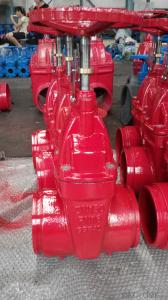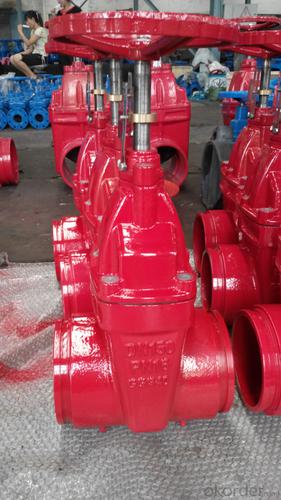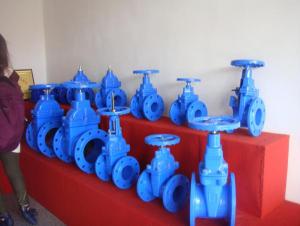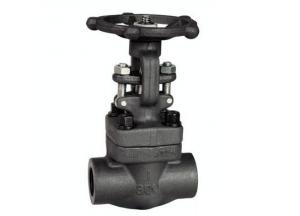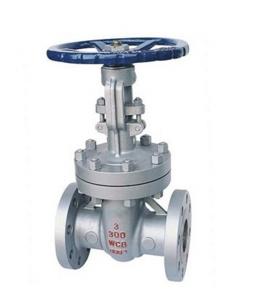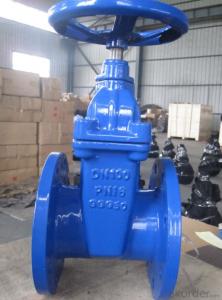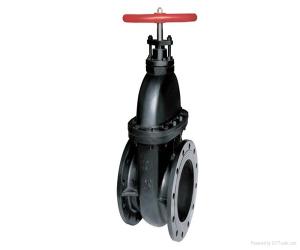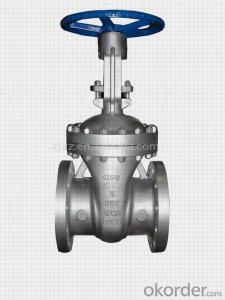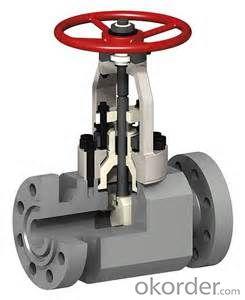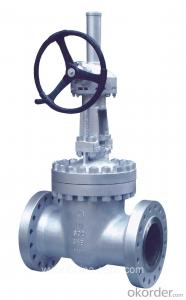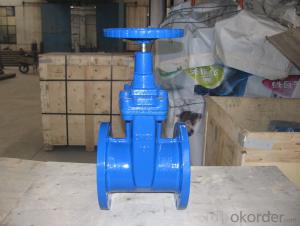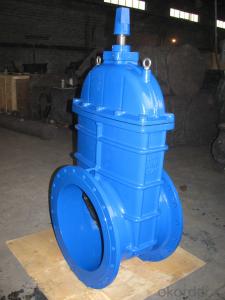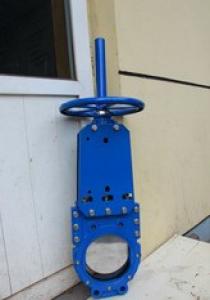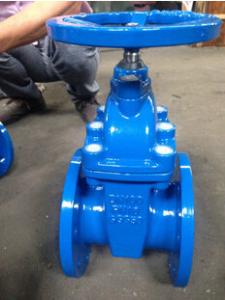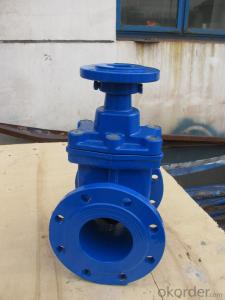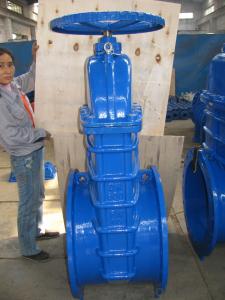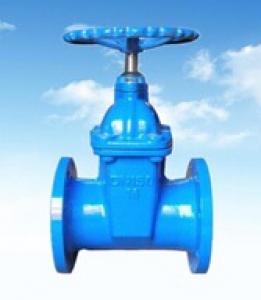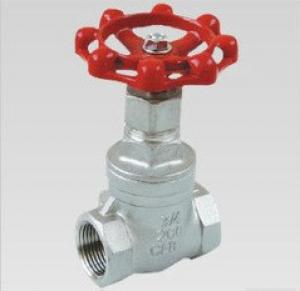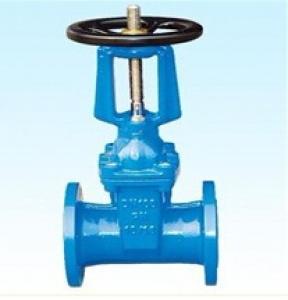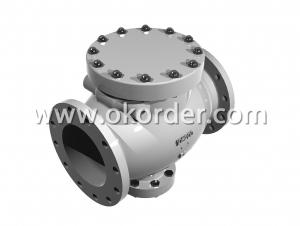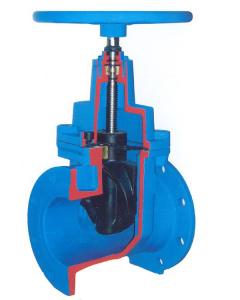Ductile Iron Gate Valve GGG50 Low Price
- Loading Port:
- China main port
- Payment Terms:
- TT OR LC
- Min Order Qty:
- 100 PCS
- Supply Capability:
- 1000 PCS/month
OKorder Service Pledge
OKorder Financial Service
You Might Also Like
1.Structure of Gate Valve Description:
A gate valve, also known as a sluice valve, is a valve that opens by lifting a round or rectangular gate/wedge out of the path of the fluid. The distinct feature of a gate valve is the sealing surfaces between the gate and seats are planar, so gate valves are often used when a straight-line flow of fluid and minimum restriction is desired. The gate faces can form a wedge shape or they can be parallel. Gate valves are primarily used to permit or prevent the flow of liquids, but typical gate valves shouldn't be used for regulating flow, unless they are specifically designed for that purpose. Because of their ability to cut through liquids, gate valves are often used in the petroleum industry. For extremely thick fluids, a specialty valve often known as a knife valve is used to cut through the liquid. On opening the gate valve, the flow path is enlarged in a highly nonlinear manner with respect to percent of opening. This means that flow rate does not change evenly with stem travel. Also, a partially open gate disk tends to vibrate from the fluid flow. Most of the flow change occurs near shutoff with a relatively high fluid velocity causing disk and seat wear and eventual leakage if used to regulate flow. Typical gate valves are designed to be fully opened or closed.When fully open, the typical gate valve has no obstruction in the flow path, resulting in very low friction loss.
2. Main Features of the Gate Valve:
• Valve body cavity using non-toxic epoxy resin,both inside and outside flashboard completely is coated with rubber
• Free of water pollution
• High manufacturing accuracy
• High strength
• Environmental protection and energy saving
• Good visual effect
3. Images
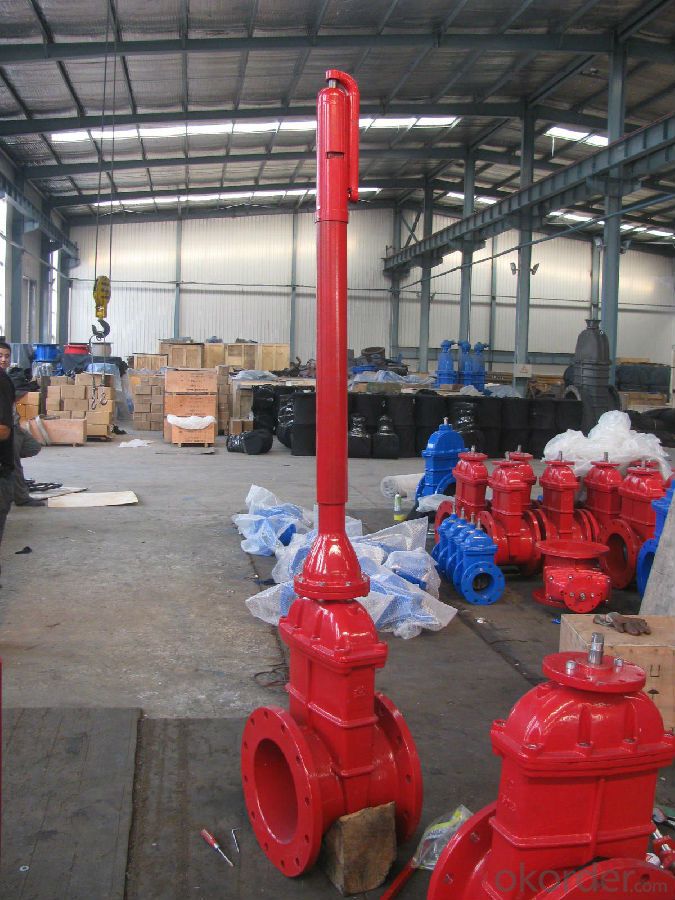
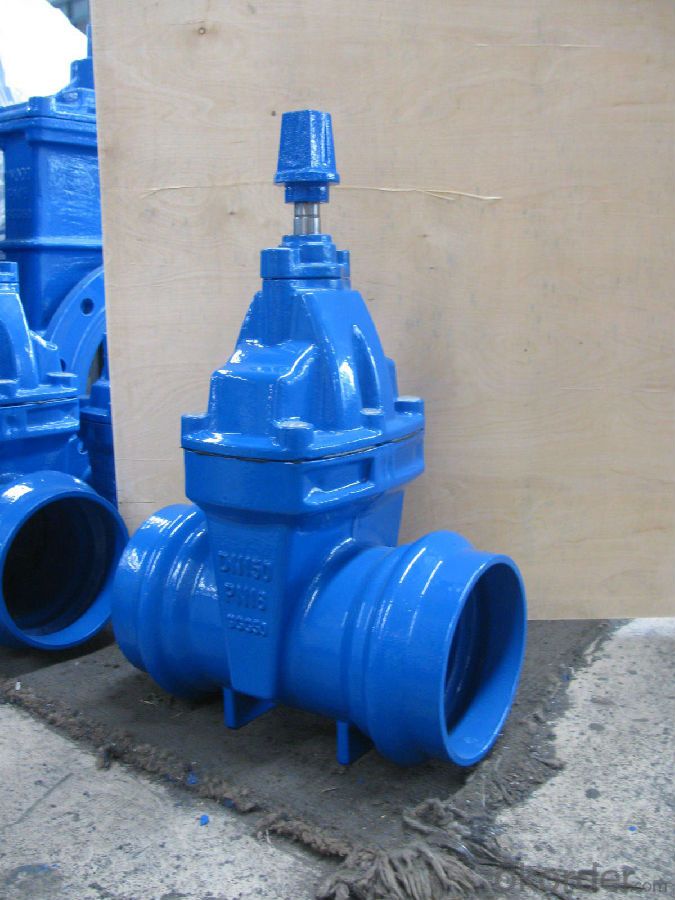
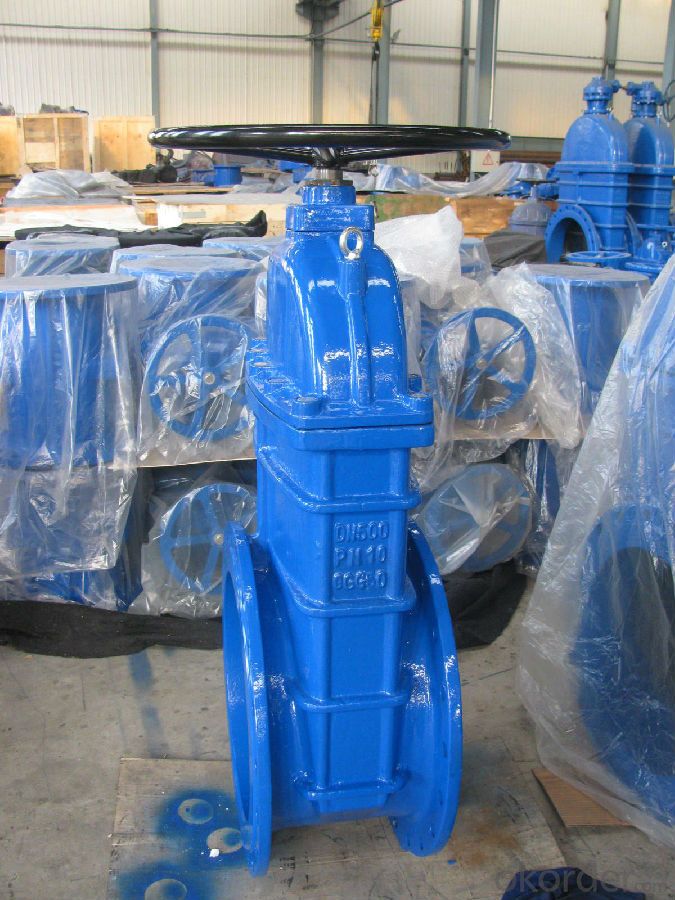
4. Gate valve Specification
Gate valve
Ductile iron gate valve
Flange Gate valve
Our company can produce all kinds of valves, If you have any inquiry, please contact us, we will offer you our best price.
1,good quality and competitive prices |
2,WRAS,CE,ISO 9001 approved. |
3,AKZO epoxy coating available |
Flanged ends according to BS,DIN,MSS,ANSI JIS |
Designed according BS,DIN,MSS,ANSI JIS |
Ductile Iron or Cast Iron body, bonnet and handwheel |
Cast iron wedge, NBR/EPDM coated |
Stainless steel stem, epoxy coating |
Test: BS,DIN,MSS,ANSI JIS |
5.FAQ
1. What's are the characteristics of gate valve?
The distinct feature of a gate valve is the sealing surfaces between the gate and seats are planar, so gate valves are often used when a straight-line flow of fluid and minimum restriction is desired. The gate faces can form a wedge shape or they can be parallel.
2. What is the work principle of gate valve ?
The gate faces can form a wedge shape or they can be parallel. Gate valves are primarily used to permit or prevent the flow of liquids, but typical gate valves shouldn't be used for regulating flow, unless they are specifically designed for that purpose. Because of their ability to cut through liquids, gate valves are often used in the petroleum industry.
3. What is the structure?
Bonnets provide leakproof closure for the valve body. Gate valves may have a screw-in, union, or bolted bonnet. Screw-in bonnet is the simplest, offering a durable, pressure-tight seal. Union bonnet is suitable for applications requiring frequent inspection and cleaning. It also gives the body added strength. Bolted bonnet is used for larger valves and higher pressure applications.
- Q: What does gate valve Z44T-10-200 code mean?
- The meaning of the model is standard, the landlord himself to check the JB/T308 standard, Baidu library some, and is free to download:JB/T 308-2004 valve type method of preparation clear EditionHttp://wenku.baidu /view/5f798850ad02de80d4d84036.htmlZ = gate valve4 = connection: flange4 = structure form: double gateT = sealing surface material: Copper10 = nominal pressure: 1.0MPa, followed by no letters indicate body material: Cast Iron200 = nominal path: DN200
- Q: What is the standard length of GB steel gate valve?
- 1, product standardsGeneral purpose valves, flanged connections, iron gate valves, GB/T 12232-2005General requirements for steel valves GB/T 12224-2005"Steel flat gate valves for pipelines" JB/T 5298-91Inspection and test of valves. JB/T 9092-1999Standard for safety evaluation of drinking water distribution equipment and protective materials GB/T 17219-1998
- Q: What is gate valve (with force transfer joint)?
- Flange valve is equipped with a force expansion joints, easy installation
- Q: What is the difference between Z41X gate valve and Z45X gate valve?
- There is no difference in function. The two models are mainly made of different sealing materials,
- Q: What are the common standards for gate valves?
- Is the gate valve opening and closing parts, RAM direction of motion perpendicular to the direction of the fluid, valve can only be fully open and fully closed, can not be adjusted and the throttle. The following common standards for Fujian Biaoguang valve for valve: design specification: JB/T 7746, API602 JB/T 7746, the length of the structure specification / thread socket factory test and inspection of JB/T1751/GB7306, ANSI: B16.11/B2.1: JB/T 9092, API598 pressure temperature: GB/T 9131, ANSI B16.34, MSS GB/T 12220 product ID: SP25 delivery specification: JB/T 7928
- Q: Generally, how big is the diameter of the installation flange plate gate valve?
- Under normal circumstances:Flanged gate valves for piping over DN50,DN50 (below) can be made of wire or gate valves, or flanged gate valves (flanged valves or welded gate valves)
- Q: What is the Z15T-16C letter of the gate valve?
- The Z class code indicates the type of gate valve, gate valve is the first letter of the alphabet. The gate is manual driving mode, 1 said the connection form of gate valve for connecting thread, 5 represents the structure form of gate valve for rigid single gate, T gate said lining material of copper alloy, 16 PN1.6MPa nominal pressure valve. C said the valve body material is carbon steel.
- Q: What is the size and length of the DN80 gate valve? 10 kg and 16 kg, respectively?
- Valve structure length standards are PN16, short series for 203mm, long series for 280mm, flange size by PN16.
- Q: What are the differences between the gate valve and the cut-off valve?
- Is the gate valve opening and closing parts, RAM direction of motion perpendicular to the direction of the fluid, valve can only be fully open and fully closed, is not suitable for regulation and throttle. The gate has two sealing surfaces. The two sealing surfaces of the most commonly used wedge gate valves form a wedge. The wedge angle varies with valve parameters, usually 5o. Wedge gate valve can be made into a whole, called the rigid gate; can also be made to produce micro deformation of ram, in order to improve its process of deviation, make up the sealing surface angle in the process, the gate is called the flexible gate. Valve closed, the sealing surface can only rely on medium pressure to seal, that is to rely on medium pressure to the gate sealing surface pressure to the other side of the seat to ensure the sealing surface seal, which is self sealing. Most of the valve is forced seal, that is, when the valve closes, to rely on external force to force the gate to the seat, in order to ensure the sealing surface sealing.A stop valve is a valve that closes the valve and moves along the center line of the valve seat. According to this form of valve movement, the valve seat opening change is proportional to the valve stroke. Because of the valve stem to open or close the trip is relatively short, but very reliable cut off function, and because changes in the valve seat and the valve stroke is proportional, is very suitable for flow regulation. As a result, this type of valve is ideal for use as a shut-off or regulator and throttling
- Q: The legend of gate valve and stop valve
- Compared with the cut-off valve, the main advantage is that the flow resistance is small, the flow resistance coefficient of ordinary gate valve is about 0.08~0.12, while the ordinary cut-off valve resistance coefficient is about 3.5~4.5. Opening, closing force is small, the medium can flow in two directions. The disadvantage is that the structure is complex and the height is large. The sealing surface is easy to wear. The sealing surface of the valve must be forced to close the valve to achieve sealing, in the same caliber, work pressure and the same drive device, the drive valve torque is 2.5~3.5 times the gate valve. This point should be noticed when adjusting the torque control mechanism of the electric valve.The sealing surface of the stop valve contacts each other only when the valve is completely closed, and the relative sliding amount between the valve core and the sealing surface is very small, so that the wear of the sealing cover is very small. The sealing surface of the valve cover, mostly due to the spool and sealing surface before the debris, or because of the closed state is not tight, causing the medium of high-speed erosion caused by.
Send your message to us
Ductile Iron Gate Valve GGG50 Low Price
- Loading Port:
- China main port
- Payment Terms:
- TT OR LC
- Min Order Qty:
- 100 PCS
- Supply Capability:
- 1000 PCS/month
OKorder Service Pledge
OKorder Financial Service
Similar products
Hot products
Hot Searches
